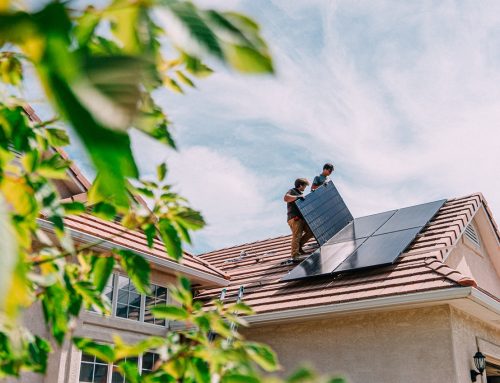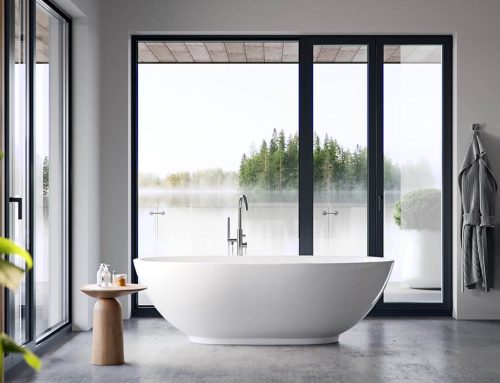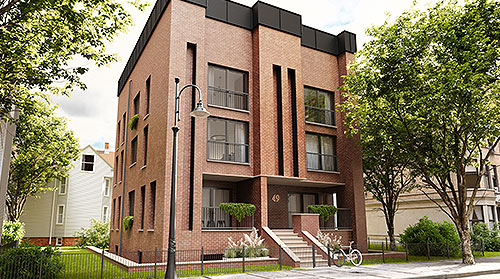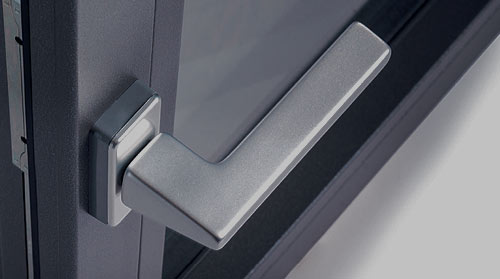When shopping for new windows, you’ll encounter the term “R-value.” This key measure indicates how well a window insulates your home, with higher R-values offering better temperature stability and energy efficiency. Whether you’re replacing old windows or outfitting a new construction, understanding R-values is crucial for making the best choice for your home. This is especially important when evaluating high-performance options like Tilt and Turn windows, which are engineered to meet stricter insulation standards. In this article, we’ll explain what R-values mean, especially for double-pane windows.
Understanding U-Value vs. R-Value
When researching energy-efficient windows, you’ll encounter two important terms: U-value and R-value. While they may seem similar, they measure different aspects of window performance.
- R-value measures a material’s resistance to heat flow—higher numbers mean better insulation. It’s about how well a material prevents heat transfer.
- U-value, or U-factor, measures the heat transfer rate through a window assembly, including the glass, frame, and spacers. Lower numbers are better, indicating less heat escaping or entering through the window.
The key difference: R-value typically refers to individual materials like wall insulation, while U-value applies to the entire window unit, making it the more common measure for windows.
Both values provide valuable insights:
- R-value tells you how well a material resists heat flow.
- U-value shows how much heat transfers through the entire window.
When shopping for windows, U-values are usually listed, but understanding both will help you make an informed decision about energy efficiency. For a deeper dive into U-values, R-values, and their impact on your home’s energy performance, check out our article: U Value vs. R Value.
Why is R-Value Important?
R-value measures how well double-pane windows resist heat flow, essentially rating their insulating power. This value considers the entire window assembly, including the glass, frame, and spacers.
The higher the R-value, the better the window insulates. A high R-value helps keep heat inside during winter and outside during summer, maintaining a comfortable indoor temperature year-round while reducing energy bills and easing the load on your HVAC system.
Several factors influence a double-pane window’s R-value:
- Glass type and thickness
- Gas fill between panes (argon or krypton)
- Spacer materials
- Frame materials and design
- Low-E coatings
The following section will examine the R values in double-pane windows and how they look for different window configurations.
R-Values and Double-Pane Windows
Double-pane windows have become a popular choice for homeowners looking to boost their home’s energy efficiency. These windows feature two panes of glass with a space between them, creating an insulating barrier that helps keep your home’s temperature stable. But not all double-pane windows are created equal when it comes to insulation.
To give you a clearer picture, let’s look at some typical R-values for different window configurations:
| Number of Panes | Air/Gas | Coating | R-Value |
|---|---|---|---|
| 2 | 1/2-inch air | None | 2.08 |
| 3 | 1/2-inch air | None | 3.22 |
| 2 | Argon | Low-E (1 coating) | 3.84 |
| 3 | Argon | Low-E (1 coating) | 5.43 |
Please note, these values are for reference only and can vary based on the specific window design, materials, and manufacturer. Always consult with the window manufacturer or your salesperson to get the precise R-values for the windows you’re considering.
Several factors can boost a window’s R-value:
- Additional panes: Adding a third pane increases the R-value from 2.08 to 3.22.
- Gas fills: Argon, a denser gas than air, reduces heat transfer and improves insulation.
- Low-E coatings: Microscopic metallic layers reflect heat while allowing light through, significantly boosting the R-value with one or two coatings.
By combining these features, you can achieve a much higher R-value. For example, a triple-pane window with argon gas and two Low-E coatings has an R-value of 5.43—more than double that of a basic double-pane window.
Comparing Window R-Values to Wall R-Values
When it comes to insulation, it’s not just windows that matter—your walls play a major role too. In modern homes, wall R-values typically range from R-12 to R-15, which is significantly higher than even the most efficient windows.
To put it in perspective, the best energy-efficient windows today reach around R-5.5. While that’s a substantial improvement over basic double-pane windows, it’s still only about a third of what your walls provide. This difference is why windows are often considered the weak link in home insulation.
However, advancements in window technology are closing the gap. Researchers and manufacturers are developing new materials, coatings, and designs aimed at improving window R-values, making them more comparable to wall insulation.
Maximizing Energy Efficiency with the Right Windows
Understanding R-values is key to choosing the right windows for your home. While windows may not yet match the insulation power of your walls, they play a vital role in your home’s overall energy efficiency. By selecting double-pane windows with higher R-values, you’re investing in both comfort and potential energy savings.
Remember, features like additional panes, gas fills, and Low-E coatings can significantly enhance a window’s insulating capabilities. However, it’s essential to view your home’s insulation as a complete system.
As window technology continues to evolve, even more efficient options will become available. For now, with your new knowledge of R-values, you’re well-prepared to make informed decisions about your home’s windows. Choose wisely, and enjoy the benefits of a more comfortable, energy-efficient living space.
How Tilt and Turn windows work — and why they excel in energy performance
Tilt and Turn windows operate with a single handle and offer two distinct opening modes. Turn the handle 90 degrees to swing the window open inward, providing full ventilation and easy cleaning. Turn it 180 degrees, and the top of the sash tilts inward for secure, draft-free airflow. This dual functionality creates a tight, multi-point seal when closed, minimizing heat loss and improving insulation.
Their airtight design, combined with advanced glazing options, makes Tilt and Turn windows a go-to choice in Europe, where strict energy-efficiency standards are the norm. It’s also why they’re gaining popularity in high-performance U.S. homes focused on comfort, thermal control, and sustainability.
Continue Reading
Products.






